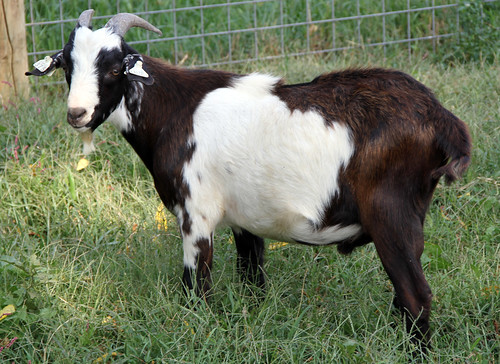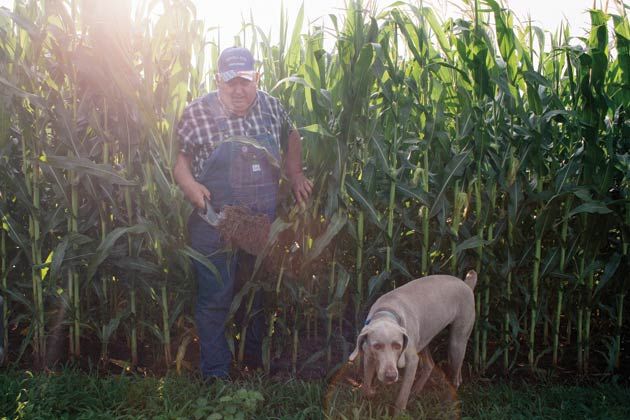Chemical-free kudzu removal by human labor, is effective, but time-consuming. When volunteers at Saluda Community Land Trust wanted better efficiency, and more time for other projects, it was time to call in the goats.
And they did, with 18 of the weed-eating critters temporarily feasting on kudzu and other undergrowth near Saluda’s water treatment plant on Pearson Falls Road.
Ron Searcy’s goats are in great demand for such assignments. Searcy, who owns Wells Farm in Horse Shoe, west of Hendersonville, has some 300 goats, which he rents out for natural management of unwanted plant growth.
“This is a dream come true,” exclaimed SCLT board member Nora Parks Anderson. Anderson’s joy stemmed at least partly from the animals targeting the culprit quickly.
“They went straight to the kudzu first,” she reported.
SCLT board members have waited a long time for the goats’ heralded arrival. The four-legged weed-eaters made it to Saluda Monday, Sept. 16. They’ll be at the water treatment plant for about 10 days, returning to the site three more times over two years.
Anderson has been thinking about goats and weed control since she became aware of such practices some 15-20 years ago.
Though SCLT board members have employed human labor to control kudzu on small sites, larger sites require more aggressive action.
“Some of our sites were very large – acres,” said Anderson. “Our goal was to see all the different methods that were out there.”
Enter the goats. SCLT has partnered with Saluda City officials to bring the critters to the water treatment site. In addition, the Polk County Community Foundation has provided a grant to cover much of the expense.
To keep the goats where they’re most needed, Searcy created an enclosure of electric fence. Also within the fence is Samantha, a large dog, easy going toward humans, but on hand to keep potentially harmful animals out of the enclosure.


